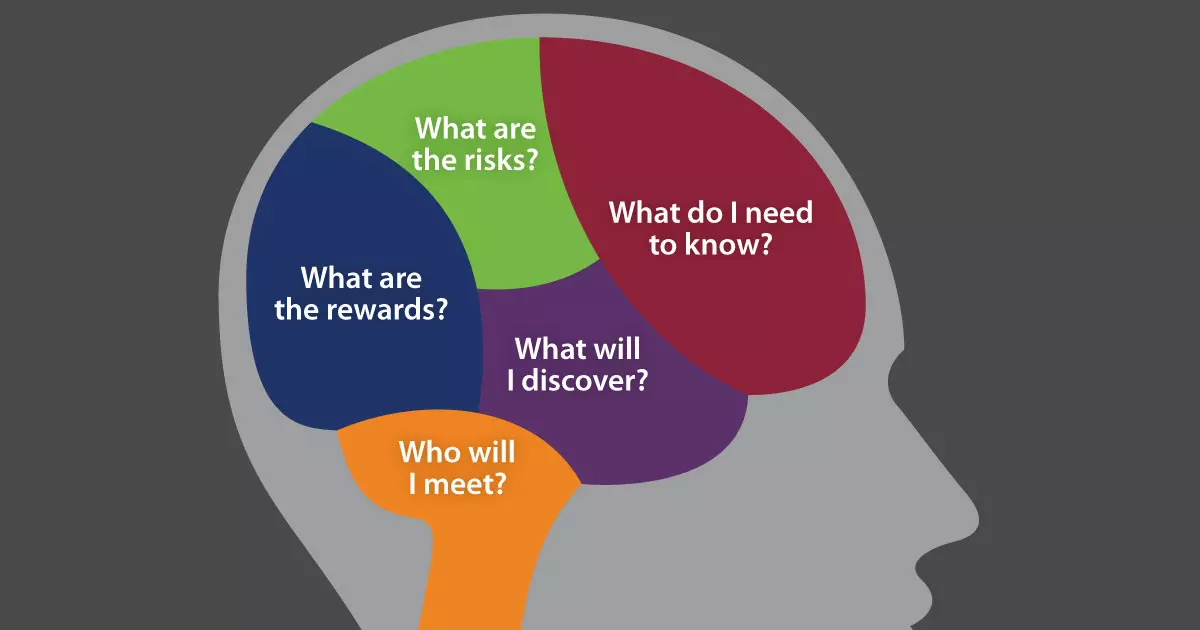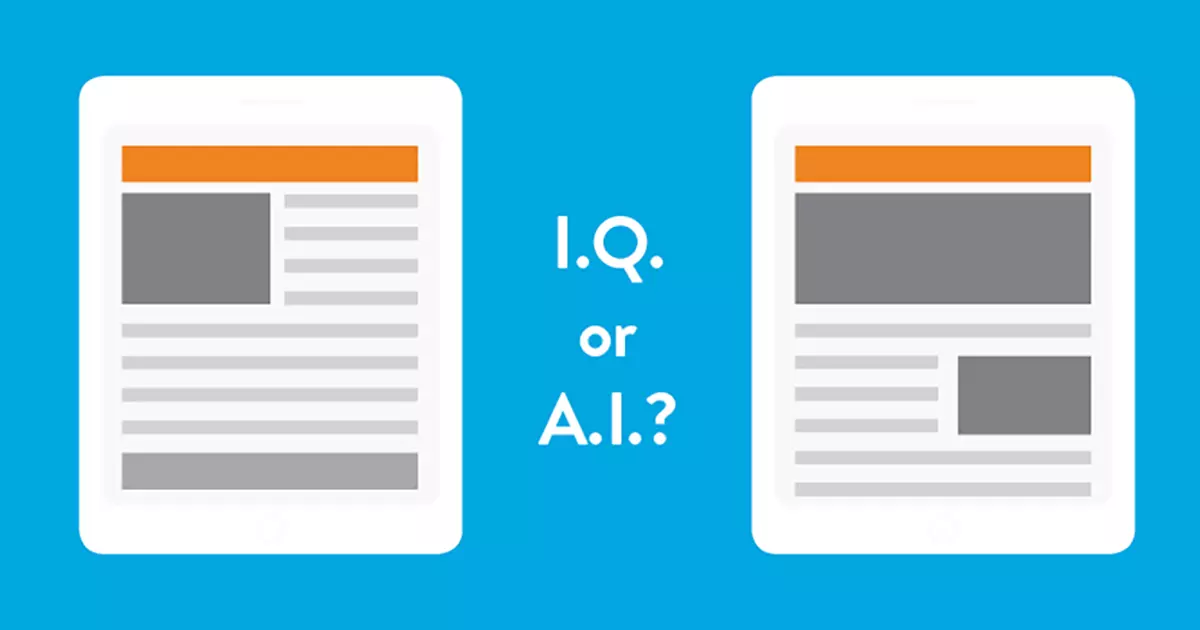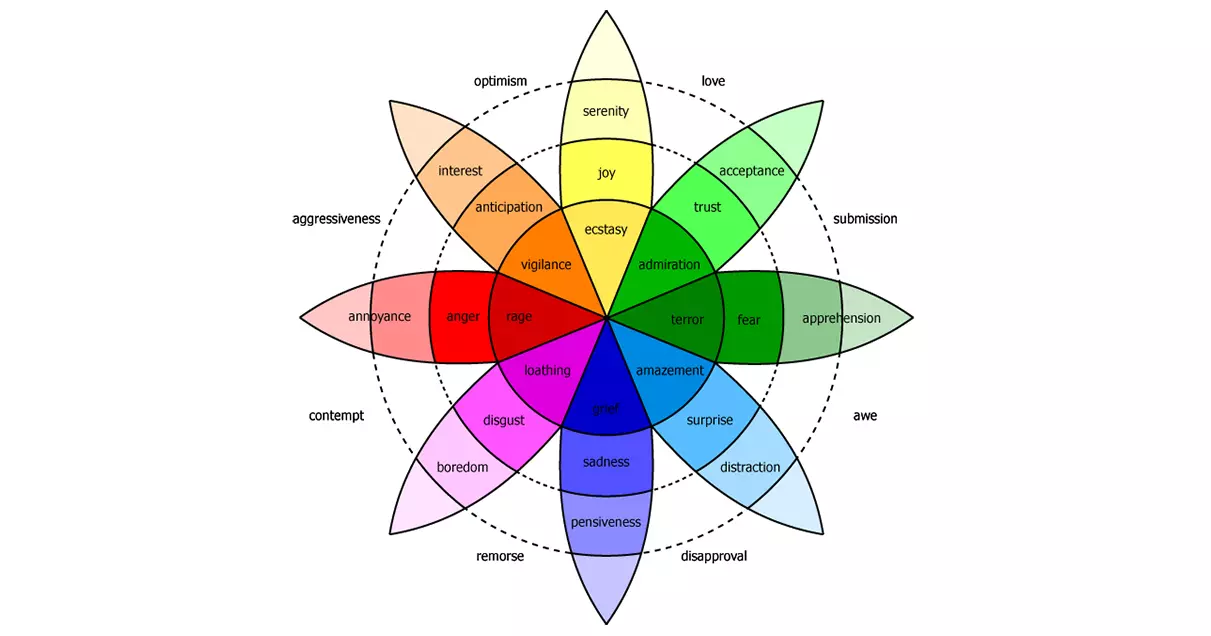Take the Guesswork Out of Creating B2B Content — and Feel Happier

Before you publish your B2B social and marketing content, see how these new tools give you awesome clues about which versions will be more engaging.
Before you publish your social post, can you tell if Version A will be 75% more engaging than Version B—or vice versa?
Today, you can use new tools based on AI and human-persuasion research to make you feel very confident when evaluating the words and images in different versions of content.
To get a clue about what resonates with customers, marketers can employ a lot of shiny tools: Google Analytics, social listening, persona research, content strategies, customer-journey mapping, A/B testing and other procedures that provide good guidance.
But at the start of the creative process—when picking which words and images will work best—marketers and content creators often use an old-fashioned method: they make an “educated” guess.
In fact, according to a survey that did not include our own agency, agency professionals believe that when creating content, "the only rule is: there are no rules." For the most part, "scientific evidence on persuasive advertising has been ignored" by agencies. Advertisers tend to “question the value of using findings from empirical research, preferring instead to rely on their judgment.”

Understandably, human content creators resist the straitjacket imposed by research. And there is good reason: one noted researcher observes that "fewer than 5%" of published advertising studies are useful and often "obtuse" and unverified.
But while human beings may guess (educated or otherwise) AI natural-language-generation (NLG) robots can create content with high confidence. One claims to need less than a second to write a dozen emails that will be 75% more effective than what you take hours to produce.
Some observers foresee "a time when most or all marketing text" will be written by machine.
But look under the hood, and you'll see that NLG robots also guess—although scientifically. One AI tool uses A/B testing to identify a list of effective “power words.” Then a machine-learning (ML) algorithm—such as a naive Bayes classifier—assigns a probability of future success based on past performance of the words it picks.
For now, NLG programs that can create content with high confidence are expensive to use and are limited to specific B2C contexts (such as banking). But there are other ways you can use AI to boost the probability of engagement.
Effective content is more than possible; it is probable!
One tool that is exploding in popularity is AI emotion analysis.
Championed by IBM Watson™ Tone Analyzer services, emotion analysis of content uses linguistic and psychological theories to assign each word an emotional value. Research shows that content that scores high for a positive emotion like "joy" is more likely to be shared than content with a negative tone.
Words can be scored with five different emotions—joy, fear, sadness, anger and disgust—although other research identifies a set of 53 emotional tones or as few as four.

Using emotion is particularly useful in brand messaging and virality. And emotion power words ("free," "only X days left," "today only") are great for B2C email subject lines or calls-to-action inviting immediate response.
But what role does emotion analysis play in B2B marketing communications? Should B2B marketers appeal more to emotions? If you're currently using emotion analysis to evaluate B2B engagement (and why not?), there are three issues to be aware of:
1. You can use AI emotion analysis on content you've already published, but it is not designed to predict engagement with content you will publish.
Social media listening tools, for example, use AI to sift through thousands of posts to detect positive or negative sentiments. Some AI tools can even write personalized messages with words selected for an appropriate emotional response. But those tools can’t measure engagement on content you haven’t yet published. To confidently gauge the potential effectiveness of B2B content, it helps to include linguistic and cognitive factors beyond the scope of conventional emotion analysis.
2. You can use emotional words to trigger an emotional response, but not necessarily a thoughtful one.
If you create a Twitter or LinkedIn post with a high "joy" score, it's likely to attract more likes and followers than content that scores lower. But because that number is pulled out of an AI black box, it doesn't give you a clue about whether happy-talk words like “love” and “awesome” are appropriate for your B2B audience. In fact, team-based B2B decision-makers may view an emotional appeal as manipulation—and resent it.
3. You can use emotions to influence decisions, but not necessarily inspire the right one.
A famous medical study shows that emotions are necessary for decision-making. Even B2B decisions are not purely data driven. Research also shows that emotion, cognition and motivation all work together in engaging decisions, but they follow two paths: A) Fast, intuition-based “System 1” decision-making is involved in non-reflective decisions, such as clicking “like” or forming brand associations. B) Reflective or deliberative “System 2” reasoning is used in complex decision-making, such as B2B purchasing.
So can you feel confident that B2B content is more engaging if it's simply more emotional?
Rather than settle for an emotional fling, let's look at the latest research in social influence, cognitive science and human persuasion to see factors that create deeper, richer, more satisfying engagement.

Reduce guesswork by combining human insight and AI
For a more human perspective on what makes content engaging, it pays to consider the persuasion principles identified by Dr. J. Scott Armstrong, professor of marketing at The Wharton School of the University of Pennsylvania. In his book, Persuasive Advertising: Evidence-based Principles, Dr. Armstrong has indexed over 100 factors that make content engaging. His work blends the best of both worlds: empirical research as well as flexible human conditions that free B2B marketers and content creators from the AI emotion analysis straitjacket.
Let's look at how the two different methods—AI emotion analysis and human factors—can work together to help you create effective B2B content with more confidence.
Method 1: Using AI Emotion Analysis:
A. Paste this blog's headline ("Take the Guesswork Out of Creating B2B Content—and Feel Happier") into the IBM Watson™ Tone Analyzer
B. Scroll down to see the “document-level” emotional tone and rollover "joy" to see the score: 0.94.
Method 2: Using Human Influence Factors (If you don't have time to read Dr. Armstrong's book, I'll give you two high-impact principles):
A. Use a Unique Selling Proposition/Promise. (Example: "Take the Guesswork Out of Creating B2B Content—and Feel Happier") Doing this can boost content memorability by 204%.
B. Make the first paragraph relevant. (Example: “Before you publish your social post, can you tell ...”) Doing this can boost content memorability by 174%.
(By the way, the original title of this blog was: “Take the guesswork out of creating engaging B2B content”—which scored only 0.50 for “joy” due to a less promising USP.)
Can you have confidence in numbers?
Each method is valid in its own way:
* The AI Emotion Analysis algorithm generates a decimal that indicates a very high probability that the content fits the "joy" category and, therefore, will be more likeable.
* The numbers in the Persuasion Principles method indicate day-after recall, a metric traditionally used in advertising research, because memorable content is more actionable.
This simple exercise shows that by combining different methods, you get several objective clues about your content's effectiveness beyond subjective guesswork. Today's AI emotion analysis tools are no substitute for human intelligence. In fact, currently only one AI emotion analysis platform has turned the corner from analyzing published B2C content to providing a text editor so human content creators can optimize the emotional tone of text before it’s published.
B2B marketers and content creators especially benefit from a wholistic approach that uses marketing research and AI tools in a human-centered way. By combining emotion, motivation and human persuasion factors, marketers and content creators get a whole-brain perspective that inspires confidence that their messages are mindful, not just emotional. And that makes everybody happy.
See our roadmap for smarter B2B: "The Future of B2B Marketing is Fueled by Smarter Data."
And see our earlier post on using AI in marketing: Can Artificial Intelligence Make Your B2B Content Smarter? (part 1).
Sign Up for our Newsletter - Get agency updates, industry trends and valuable resources delivered directly to you.
Godfrey Team
Godfrey helps complex B2B industries tell their stories in ways that delight their customers.




